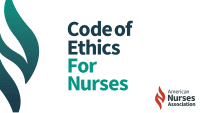How RNs can help reduce disparities in patient outcomes


The Hispanic population accounts for roughly 19% of Americans—the largest minority group in the United States. However, Hispanic adults are the least likely ethnic or racial group to have health insurance or receive preventive care. Their health outcomes reflect this gap.
Several disparities in health outcomes experienced by Hispanic patients span both physical and mental health, according to Giovanna Cecilia De Oliveira, PhD, MSN, RN, ANP-C, PMHNP-BC, a clinical associate professor at the University of Miami, who’s dedicated to reducing health disparities in the Hispanic population. She recognizes that large-scale change needs to come from organizations and communities, but she also understands the power of nurses to improve their patients’ lives. De Oliveira encourages nurses to do the following:
Acknowledge and learn
“We need to understand cultural diversity to respect the differences in the values and norms of others,” said De Oliveira, a Florida Nurses Association member. To educate yourself about the Hispanic population, she suggests the following:
High cholesterol in Hispanics under-recognized and undertreated
- Ask your organization for more cultural training specific to the population you serve.
- Visit your local health department to learn what resources exist for Hispanics in your community.
Be proactive
Language barriers and social determinants of health may keep Hispanic patients from understanding the importance of screenings, ongoing treatment, and follow-up. This requires that nurses take the initiative. “Look for signs of depression,” De Oliveira said. “Utilize family members or an interpreter to stress why preventive action is important.”
Put patients at ease
Small gestures can signify your respect and recognition of cultural differences. “Building rapport with your Hispanic patients can make them comfortable and encourage them to disclose their physical and psychological stress,” De Oliveira said.
She adds that Hispanic patients may respond well to the following:
- Address them respectfully using “Mr.” or “Mrs.” rather than using first names.
- Make direct eye contact and hold their gaze.
- Recognize the importance of religion and introduce prayer when appropriate.
- Use simple language on a third-grade level.
- Speak with a soft voice, especially when caring for youth and older individuals.
- Use therapeutic touch but ask for permission first.
Be a navigator
Patients with a language barrier or insurance challenges may feel uneasy about seeking healthcare. Only 68% of Hispanic American adults and 50% of recent Hispanic immigrants have a primary care provider, according to a study from Pew Research. About 18% of Hispanic individuals don’t have health insurance, compared to about 5% of the non-Hispanic White population (minorityhealth.hhs.gov/hispaniclatino-health).
“Refer patients to a bilingual or culturally sensitive healthcare provider or clinic, when possible, especially if you notice a language barrier,” De Oliveira said. If a bilingual provider isn’t an option, access language assistance services such as in-person or remote interpretation and translated written materials. To learn more, visit go.cms.gov/4cditBf.
Get involved
Organizations like the National Commission to Address Racism in Nursing offer interactive learning and forums through Project ECHO® on Racism in Nursing (bit.ly/3YSfrzB). This free program provides an opportunity to learn about and discuss health equity issues with other healthcare professionals.
Adapted with permission from Healthy Nurse, Healthy Nation www.hnhn.org.
American Nurse Journal. 2024; 19(9). Doi: 10.51256/ANJ092465




















